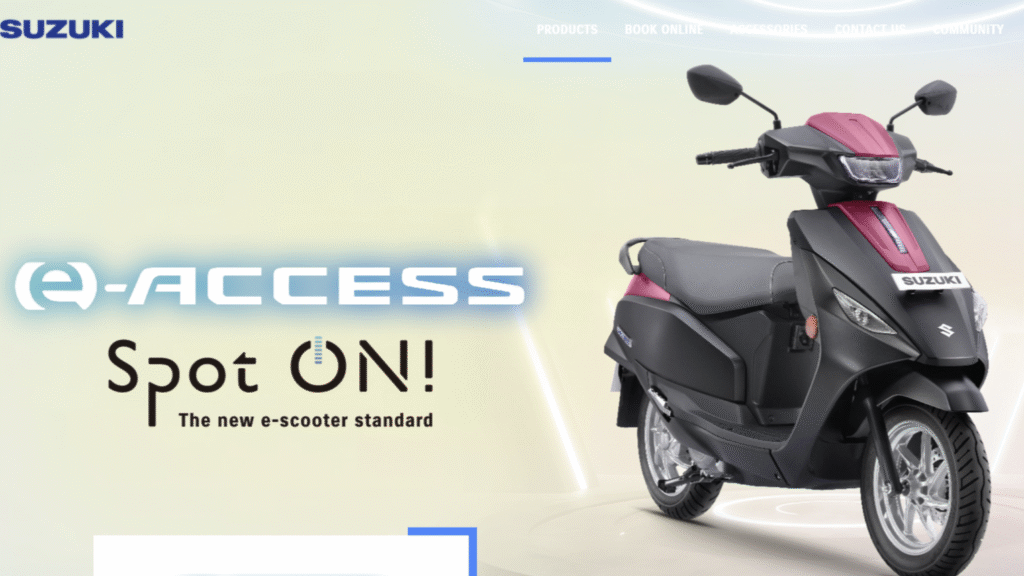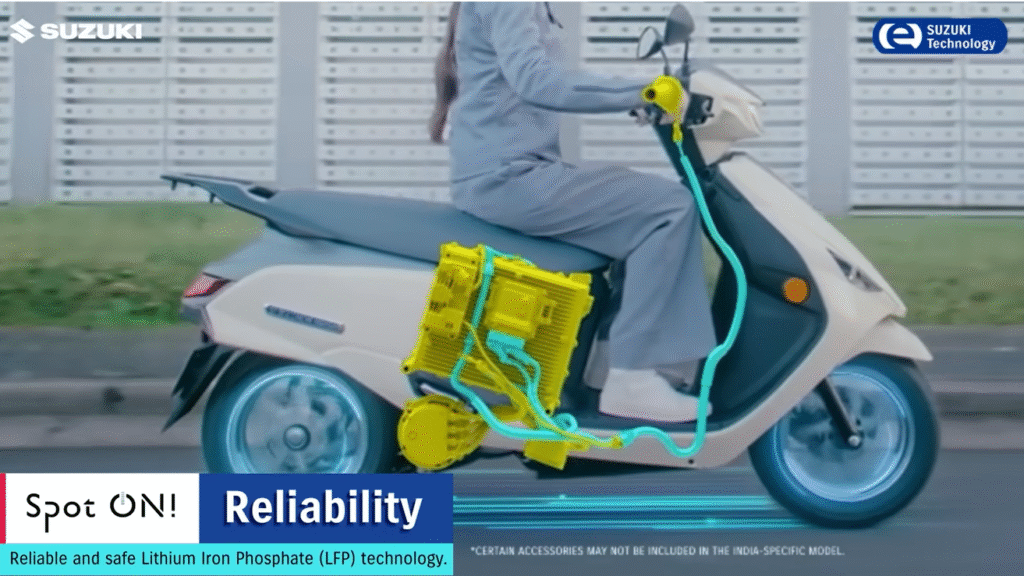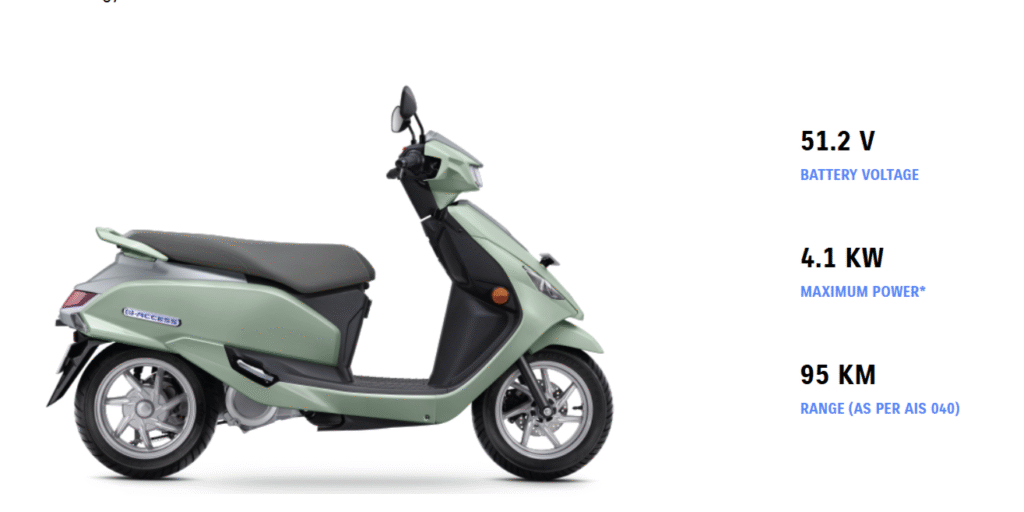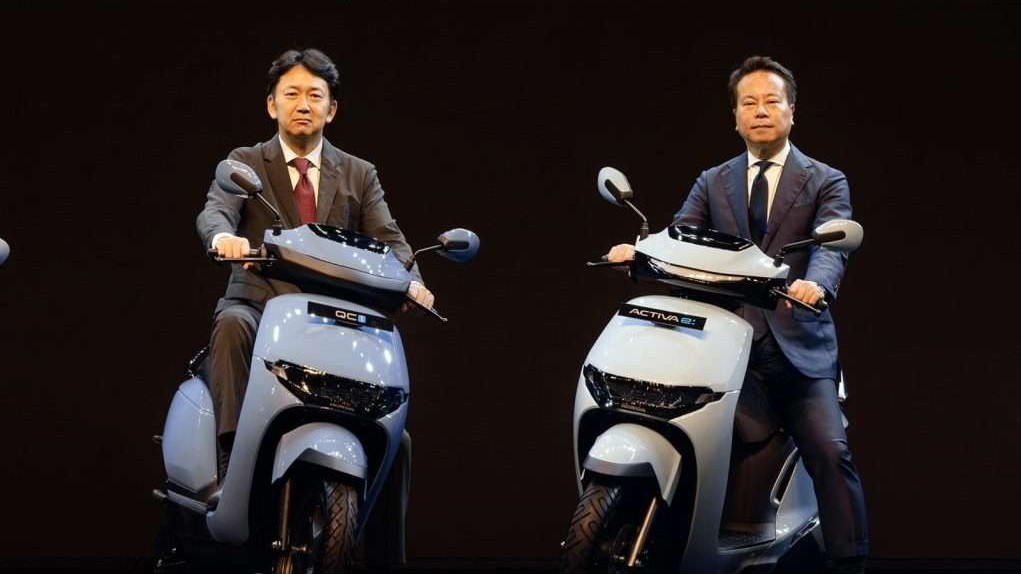Table of Contents
ToggleI Rode the Suzuki e-Access. Was It Worth the Wait?
After watching almost every two-wheeler manufacturer jump into the electric space, I often wondered what’s taking Suzuki so long? Bajaj, TVS, Hero, and even Honda have all shown their electric cards. But Suzuki? Radio silence. That changed this year.
At the Bharat Mobility Show in January, Suzuki finally unveiled their first electric scooter: the e-Access. As someone who’s spent years seeing the ICE Access silently do its job on Indian roads, this new electric sibling had me curious. I recently got to swing a leg over it not on bustling city roads, but on a go-kart track. Not ideal for a full test, but enough to understand what the e-Access is made of.

First Impressions Familiar, Yet Fresh
The moment I saw the e-Access in the paddock, I thought yep, that’s an Access. It wears the family look proudly. But spend a few seconds and the differences start to emerge. The design is clean and mature, with subtle electric cues that don’t scream for attention. Think of it like your dad wearing a new smartwatch functional, not flashy.
The LED headlamp, sharp and sleek, sits above a vertical DRL strip flanked by indicators. The front apron hides a handy cubby hole (perfect for phones) with a USB port, and the ignition, boot and charging controls are neatly managed via a knob, thanks to keyless start a welcome touch. A 4.2-inch TFT screen keeps you informed of speed, battery, modes and even turn-by-turn navigation when paired with Suzuki’s Ride Connect app.
The seat height at 765mm feels approachable for all sizes, and at 5’10”, I had no knee-handlebar clashes. The rear design is a two-tone blend with a contrasting panel, LED tail lamps and indicators. It’s all put together with typical Suzuki finesse.

Power, Range & Ride Family First
Underneath that simple silhouette is a 3.07kWh LFP battery paired with a motor that makes 4.59bhp and 15Nm of torque. Suzuki claims 95km of range under ARAI’s test cycle, and what impressed me the most wasn’t the number it was how consistent the throttle felt throughout.
On track, I started my session with 93% battery and ended with 44%, after about 40 minutes of spirited riding. That included hard launches, loops, and a bit of hooning (as much as you can hoon on a family scooter). For an urban commute, that range figure seems believable.
There are three ride modes
Eco: Max regen, top speed capped at 55km/h
A: Moderate regen, 71km/h top speed
B: Least regen, same top speed but coasts better
Throttle response remains fairly consistent across all modes, though in B mode, you really feel the scooter rolling longer thanks to the lack of braking from regen.
What stood out was how gracefully the scooter takes off. There’s no jerky pull, no hesitation just clean, quiet acceleration. It’s tuned to suit your parents, your spouse, or even your teenage sibling. No drama, just drive.

Handling & Comfort Predictable is Good
Since we were confined to a go-kart track, I couldn’t test out potholes and flyovers. But I did get a taste of how the chassis and suspension work in controlled conditions.
The underbone frame cleverly uses the aluminium battery case as a stressed member smart move, Suzuki. It’s suspended on a telescopic front fork and a monoshock at the rear.
The e-Access doesn’t feel sporty and that’s okay. It’s predictable, stable, and agile enough without feeling twitchy. Braking is handled by a front disc and rear drum, and the bite is sufficient for the kind of performance the scooter offers.
Over a few plastic bumps and rumble strips, I noticed the rear shock rebounding a bit quickly, but I’ll wait to ride it on real roads before giving a final verdict.
Features That Make Sense
Suzuki’s pitch is simple no gimmicks, just useful tech. And that reflects in the e-Access.
The TFT display is sharp and functional. When paired with Suzuki Ride Connect, it shows turn-by-turn navigation, weather, calendar events, and phone notifications.
The front cubby is roomy, and the USB charger is a lifesaver.
The 17-litre underseat storage could’ve been larger, sure, but it’s practical enough for daily use. I did like the small detail of the boot lid staying open great for one-handed operation.

Charging is also straightforward
Home charger
0–80% in 4.5 hours,
0–100% in 6 hours 20 minutes
DC Fast Charger at Suzuki dealerships
0–80% in 1 hour 12 minutes,
0–100% in 2 hours 12 minutes
So, Is the Suzuki e-Access Worth It?
If I had to summarize the e-Access in one word, it would be reassuring. It may not lead the EV charge with radical performance or bold design, but it plays the long game. Suzuki’s focus is on longevity, practicality, and consistency backed by an LFP battery, maintenance-free belt drive system, and a seven-year/70,000km durability promise.
The real-world verdict will come once we get to ride it through traffic, carry a pillion, and stretch its legs over a week. But from what I experienced, Suzuki’s first EV is a solid, no-nonsense scooter that finally brings the trusted Access name into the future.
No official price tag yet, but if Suzuki can place it smartly against rivals like TVS iQube, Ather 450S, and Bajaj Chetak, the e-Access might just be the new go-to electric scooter for Indian families.


